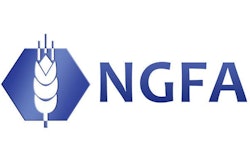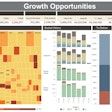
I think that it's safe to say that we are now officially well into the next big “opportunity.” Some call it a “big rally;" some call it a “headache.”
We know that while a dramatic move upward in prices comes with its challenges, it also brings a wealth of opportunity for the prepared grain elevator.
There are some things that every CEO, CFO and grain department head should have on their mind to prepare for an event like this. Thinking about these things ahead of an opportunity might be better, but here we are.
Detailed and up-to-date cash flow plan
Make sure that you have a detailed cash flow plan that is up to date and that allows your organization the opportunity to stress test the financials and credit line under rally conditions. Understanding your plan from both a bushel flow AND cash flow perspective will be very important.
Likely there will be inventory, forward contracts and HTAs that will all require futures and incurring margin calls. Remember, the purchases during a dramatic rise in futures levels also result in opportunities to buy some excellent basis numbers if you can afford to carry the positions.
For the unprepared, they will be forced to sell off positions at a loss if they cannot sustain the margin calls. Knowing and understanding the magnitude of this opportunity will be the number one reason most people take action and have a good plan.
Preservation and access to capital
Preservation and access to working capital will be critical. To capture the looming opportunity, your ability to finance your positions will be the limiting factor to your success. Banks will typically lend four to six times your working capital. Under the circumstances of a significant upward price move, your ability to generate additional working capital will be crucial.
Generating capital is typically done through earnings or refinancing long-term assets that are partially or entirely paid off. Let’s assume that you have a paid grain bin, and it has been appraised for $2 million.
A lender might be willing to offer a $1 million loan for a 10-year period. In return for the face amount in cash, you would then have a current portion of the long-term debt of $100,000 and a long-term portion of $900,000.
The example would increase the working capital of the $900,000, resulting in another $3.6 million – $5.4 million in your credit line, depending on the lender. This example is a very simple explanation, but you get the idea. Increasing working capital can lead to an increased credit line capacity.
Knowledgeable lender
Ensure that your lender and their team are knowledgeable to ensure no unnecessary obstacles between you and the opportunity that awaits.
Your loan officer/relationship manager is your advocate with the credit department at the lender. He needs to understand what will be expected of him, his team and the lender in this time of quickly changing events.
By having conversations with the lender well before the time that opportunity manifests itself, you will help them understand the right action to take at the moment.
Additionally, helping the relationship manager to understand what documentation can be provided regularly now will enable you and your team to guide them through the process of understanding what the documents show and what they mean. It will also help them to verify what you are communicating to them by way of supporting documentation.
This will allow them to share that information and understanding with the credit team, analysts and compliance people that many people never see. We must remember that many of that back-room team have not been through a significant price move. We need to understand that and help them get ready too.
Routines and processes
Lastly, we need to ensure that we have the routines and processes that will ensure our success and maximize our ability to capture an opportunity. From the regular daily routines and processes that we are balancing in a timely fashion, to monthly functions that are so important to accurate financials, to those times when we get our team together and talk about those “crazy” happenings that nobody can predict but happen all too often.
When was the last time your team talked about the opportunity to acquire a neighboring facility that you’ve always had your eye on? Under what circumstances would you begin to get serious about it? Is there a price level that it becomes a “no-brainer?” It’s something that should be discussed with a process that has been used and proven to be useful for you and your company.
One thing that we know for sure is that the best opportunities come when we least expect them. They also come when those that were not prepared are in a stressed or distressed position and are looking to get out.
We don’t want to be in that unfortunate situation, but we do want to take advantage of opportunities that just don’t come around very often. ■


















